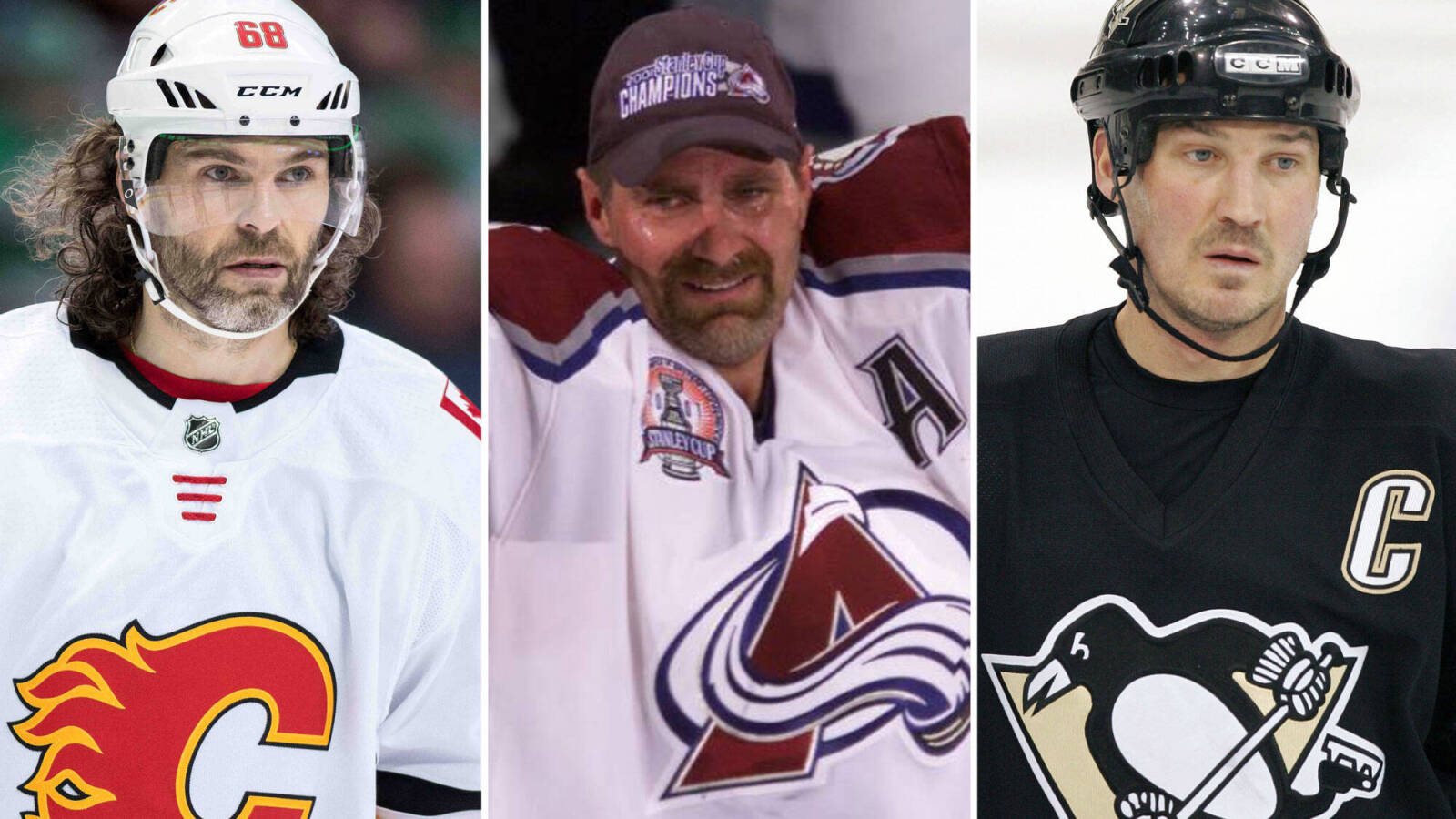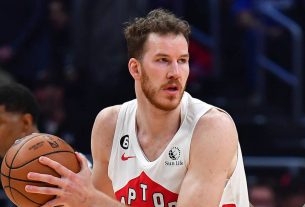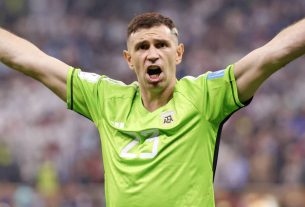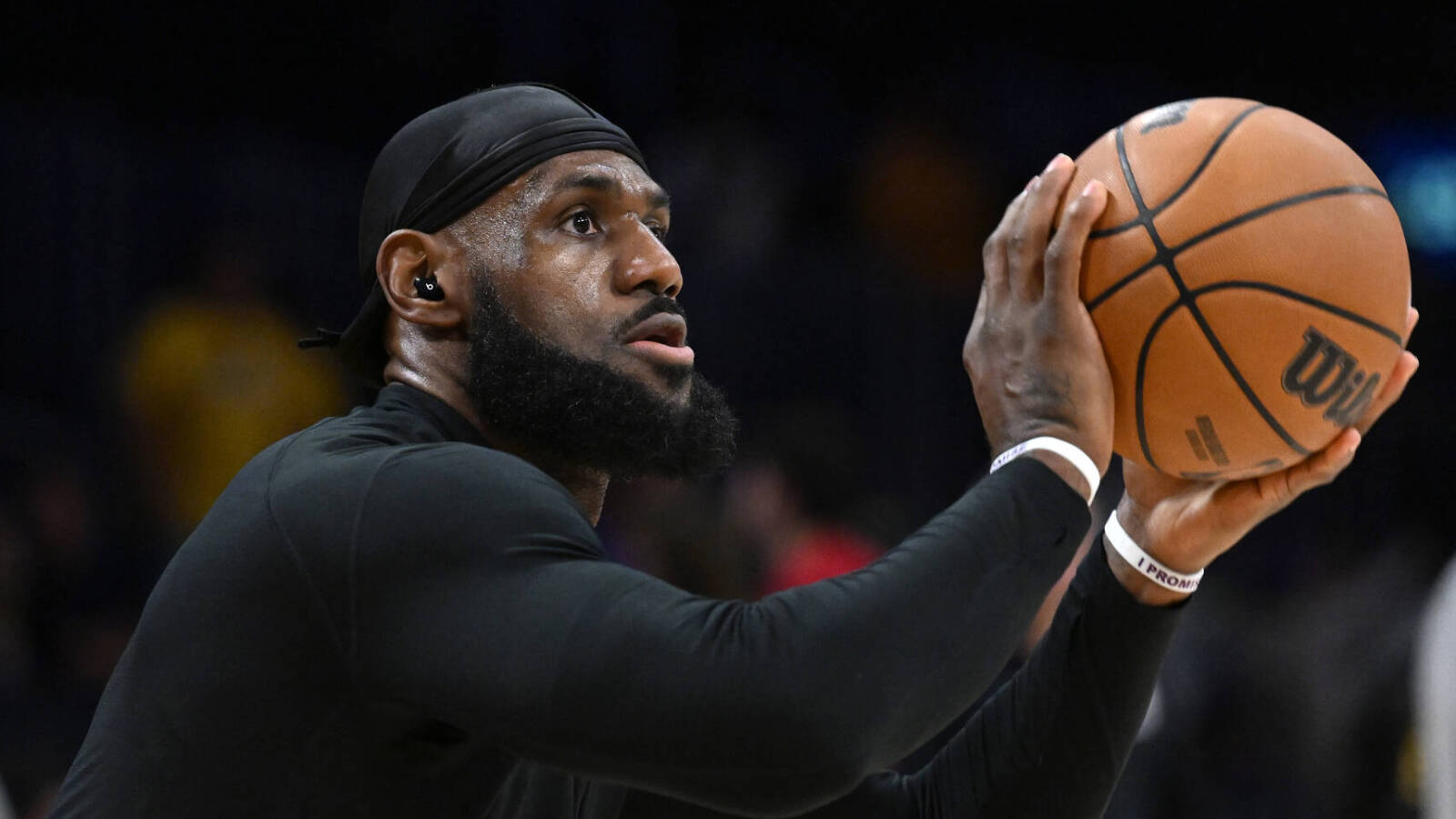Sports tend to be a young person’s game, with most of the best professional athletes in their 20s. Players tend to retire in their 30s — even the best ones — however, some are able to hold on for a little longer. In fact, dozens of NHL players have managed to play in at least one game after blowing out 40 candles. Granted, that’s out of literally hundreds of guys who have played in the league, so it’s still rarified air. Here are the NHL players who donned a sweater in their 40s.
John E. Sokolowski/USA TODAY Sports
We’re starting with arguably the most famous 40-year-old in NHL history. David Ayres has played in one NHL game, and it was as a 42-year-old. You know the story. Both of the Carolina goalies got injured, leaving the team in need of an emergency goalie in Toronto. Enter Toronto Marlies Zamboni driver Ayres. In his NHL debut he made eight saves on 10 shots to help give the Hurricanes a win and turn himself into a cult hero.
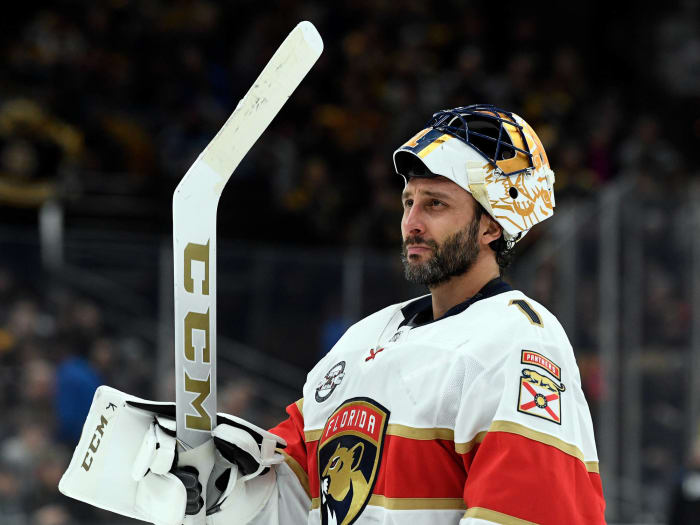
Brian Fluharty/USA TODAY Sports
We’re going to treat the goalies separately from the skaters, though they all count. Luongo is one of the best goalies of his generation, though he never won a Vezina. But he did make five All-Star Games. Luongo finished his long career in Florida, where he played one game after turning 40 and then retired.

Dirk Shadd/Tampa Bay Times/MCT/Sipa USA
“The Bulin Wall” started his career after the fall of the Soviet Union but not that long afterward. He made his first NHL start with the original version of the Jets in 1994. Khabibulin then proceeded to play in the NHL for 20 years. He barely saw action in his last couple of seasons, playing in 12 games as a 40-year-old and then in four as a 41-year-old with the Blackhawks.
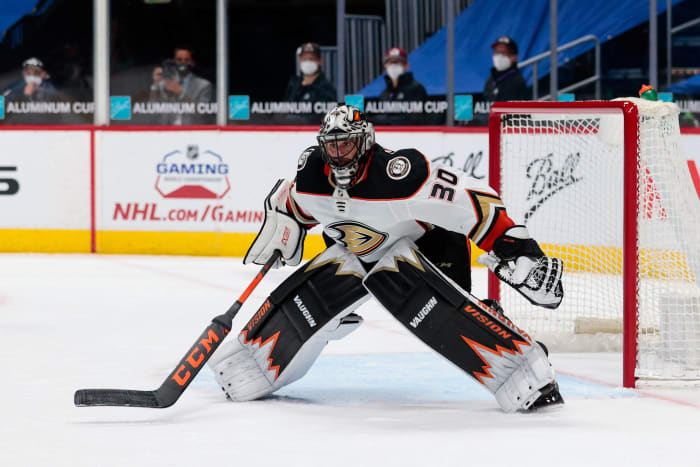
Isaiah J. Downing/USA TODAY Sports
He won a Hobey Baker in college and a Vezina in the NHL, and the American-born goalie also made it into his forties. In his final NHL season, 2021-22, he made 16 appearances for the Anaheim Ducks. At this point, Miller was kind of just hanging on, as he posted an .882 save percentage, the worst of his career.

Denis Brodeur/NHLI via Getty Images
Esposito’s Hall of Fame career was spent almost entirely with the Blackhawks. The brother of the legendary Bruin Phil Esposito, Tony won three Vezinas in his career, including winning the Calder for Rookie of the Year the same season as his first Vezina. While he was an ironman for most of his career, age caught up to him eventually, and he played in only 18 games in his final season.

John Medina/WireImage
Burke spent 18 seasons in the NHL as a journeyman. Over his career, he suited up in goal for nine different teams. This includes one season with the Kings when he was 40. He made 23 appearances, posting a .901 save percentage.
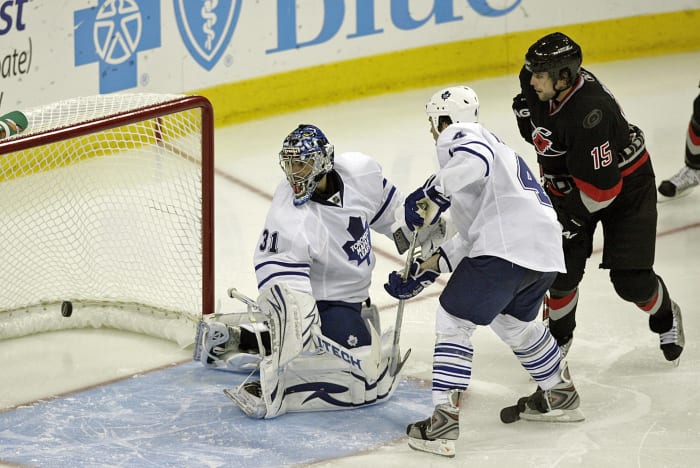
Chris Seward/Raleigh News & Observer/MCT/Sipa USA
“Cujo” picked up 454 wins in his career, seventh most in NHL history. Some think Joseph should be a Hall of Famer, but he never did win that Stanley Cup. After a weird stop in Calgary for nine games as a 40-year-old, Joseph returned to Toronto for one final season as a 41-year-old. He appeared in 21 games, and got 11 starts, but they did not go well.
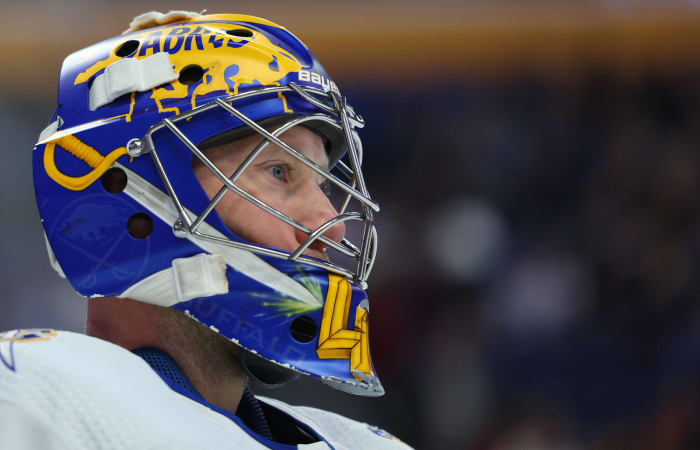
Timothy T. Ludwig/USA TODAY Sports
Anderson is still active, so he can add to his total, though it came as a bit of a surprise. The goalie was basically out of the NHL, but then Washington called on him to make four starts in the 2020-21 season. This was his age-39 season, though. That was enough for Buffalo to get him a shot. He made 31 starts in his age-40 campaign, and he’s still with the Sabres.

Harry How/Getty Images
Brodeur played in a whopping 75 games in his 40s, though we wish it was seven fewer than that. After spending 21 seasons with the Devils, becoming a franchise legend, he decided to join the Blues as a 42-year-old to play seven games. It was basically his Willie Mays on the Mets moment and is best forgotten.

Joe Rimkus Jr./Miami Herald/MCT/Sipa USA
Eddie the Eagle could have been forgiven for retiring. The season before the lockout that cost the NHL an entire year, Belfour was 38. However, he decided to keep playing and returned to action, after the lockout, as a 40-year-old. The Hall of Famer didn’t just appear in two more seasons. He played in 107 games, adding to the numbers that got him into the Hall.

Rashaun Rucker/Detroit Free Press/MCT/Sipa USA
For a time, Hasek carried the Sabres. The “Dominator” didn’t just win six Vezinas in his career, but he also won the Hart Trophy as MVP twice in Buffalo. He played three different seasons in his 40s, one with Ottawa and then two with Detroit. In his final season, he had to cede the starting role to Chris Osgood in the playoffs, but the Wings won the Cup. That was a nice way to end his career.

Chuck Myers/MCT/Sipa USA
Roloson tops the charts when it comes to games played by a goalie in his 40s. Maybe he was just making up for lost time, given that his NHL career didn’t start until he was 27. The journeyman had some good years, making one All-Star Game, and he had a couple of incredible playoff runs. That includes a season in Tampa when he was 41 and made 17 playoff starts. Those don’t count toward his 142 games, though he still tops the list.
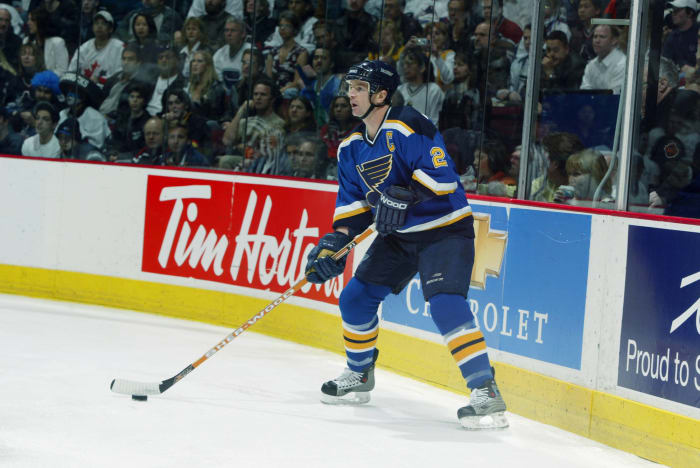
Jeff Vinnick/Getty Images/NHLI
We now move onto the skaters. None of these players has appeared in only one game in his 40s. In fact, the Hall of Famer MacInnis is first on this list having played in three games. His slap shot didn’t boom like it did in his prime, but he still got a few games in.

Noah Graham/Getty Images
Remember how Belfour returned after the lockout and it turned out fine for him? That wasn’t the case for Hull. He was 41 by the time the NHL returned to action, and he played in only five games for the Coyotes before realizing it was time to hang up his skates.

Stephen Dunn/Allsport
Carbonneau is in the Hall of Fame, largely based on his defensive acumen. The longtime Canadien won three Selkes in his career for best defensive forward and finished in the top three another three times. He appeared in 69 games in his final season, and thanks to having a birthday during the year, he played in seven games as a 40-year-old.
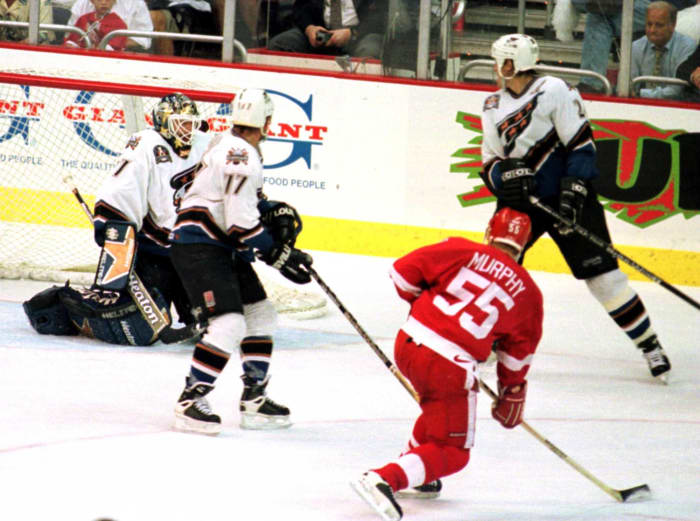
Jim McIsaac/Getty Images
Murphy is an underrated player. The Hall of Famer finished his career with 1,217 points, impressive for a defenseman. He was on four Cup-winning teams, and had he stuck around for one more season he could have won a fifth with the Red Wings. To be fair, he was 40 at the end of his final season, so retirement was understandable.
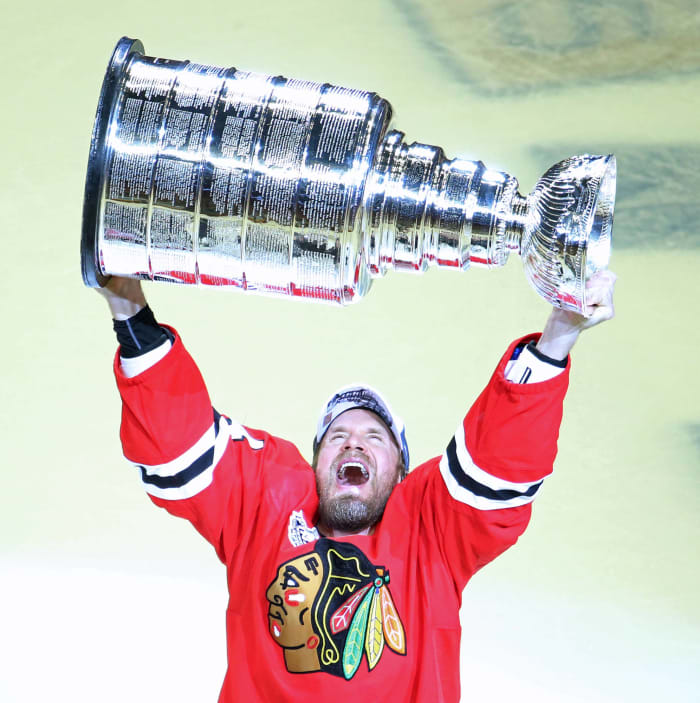
John J. Kim/Chicago Tribune/TNS
Timonen wanted that Cup. He stuck around trying to win one. He appeared in only 16 regular-season games for the Blackhawks in his final year; 10 came after he turned 40. However, Chicago did win the Cup that season. Hanging on for one more year paid off for the Finnish defenseman.
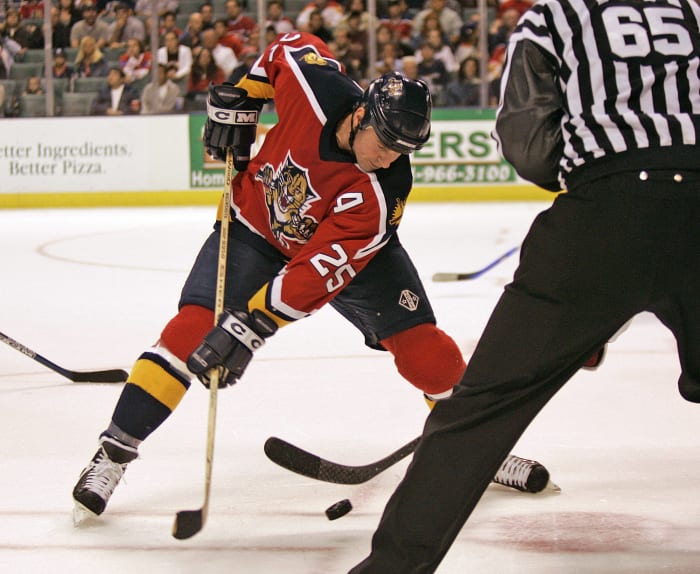
Joe Rimkus Jr./Miami Herald/KRT
Niewuendyk scored 51 goals as a rookie, winning the Calder. In his final season, the Hall of Famer joined up with the Panthers. He appeared in only 15 games, but he did score five goals and added three assists to pad his career totals just a smidge.

Denis Brodeur/NHLI via Getty Images
Holding on to play in 15 games as a 40-year-old paid off for Mullen. In his final season he scored only seven goals, but that got him to 502 in his career. By crossing the 500-goal mark, Mullen became the first American player to do that.
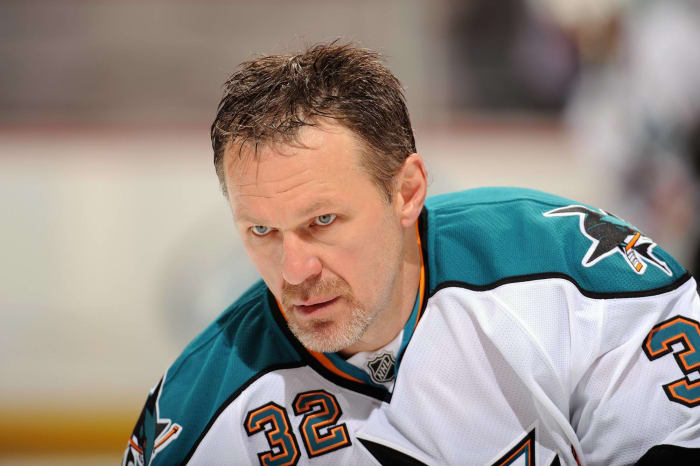
Harry How/Getty Images
Red Wings fans won’t be happy about this one, but the fact is that Lemieux played in 18 games in his 40s. In fact, he wasn’t just 40. After retiring at 37, Lemieux returned to the Sharks as a 43-year-old. He picked up only one point, an assist, but it was still an impressive feat at his age.

Kirby Lee/NHLImages
“Lucky Luc” had a few seasons with other teams, but he was primarily a King. That’s where he spent 14 of his 19 seasons. It’s where he started his career and became a star, as he made an All-NHL team in his first seven seasons. It’s also where he ended his career. Robitaille started the year as a 39-year-old but then played 19 games in his 40s.

Steve Babineau/NHLI via Getty Image
A lot of the players listed so far have been household names. That makes sense. If you haven’t had a great career, teams probably aren’t going to want to keep you around as a 40-year-old. Brewer is not a big star, but he did make four All-Star Games and excelled for the Maple Leafs in the ‘60s. The defenseman retired as a 35-year-old but then surprisingly returned when he was 41 to play 20 more games for the Leafs.

Ana P. Gutierrez/Newsday/MCT/Sipa USA
Schneider played 21 seasons in the NHL, and sometimes it feels like he played for 21 teams as well. That’s not true, but he did suit up for 10 different squads. He added two teams to that total in his final season, as he played 17 games for the Canucks and then eight games for the Coyotes.

Eliot J. Schechter/Getty Images
Lemieux unfortunately dealt with injuries, and illness, throughout his career. If he hadn’t, his already incredible numbers would be even better. While he lost games during his prime, he was able to stick around for a while, getting into 26 games in his 40s and being able to skate alongside his heir apparent, Sidney Crosby.

Melchior DiGiacomo/Getty Images
Harper was a cog in the Canadiens’ juggernaut of the late ‘60s and early ‘70s. The defenseman won five Cups in Montreal, though he was never that important a piece. He finished with only 254 points in his career, but he still stuck around for 19 seasons. Interestingly, he ended his career with the Colorado Rockies. The hockey team, not the baseball team.

Denis Brodeur/NHLI via Getty Images
Yes, like his son Brett, Bobby played into his 40s. It went a little better for him, but only just. When he was 40 he was in the WHA, so those games don’t count, but as a 41-year-old he returned to the NHL. He played in 27 games and notched 17 points.

Chuck Myers/MCT/Sipa USA
Knuble never made an All-Star Game. He was never a noted name. Knuble was a good player, though, and he had two 30-goal seasons. In his final season he returned to Philly, where he found success, playing in 28 games and notching four goals and four assists.

Chris Seward/Raleigh News & Observer/MCT/Sipa USA
Shanahan is probably best remembered as a Red Wing, as he was part of four Cup winners there. He also had a season in St. Louis where he had 52 goals and 102 points. However, he actually started his career in New Jersey, and that’s where it ended. Shanny played 34 games with New Jersey, with 32 of them as a 40-year-old. He then went on to be in charge of player discipline.

Nick Laham/Getty Images
Maybe you’re thinking, “I don’t know who this guy is, but maybe he retired in the ‘50s or something.” Nope. Albelin’s final season came in the 2005-06 year after the lockout. He started his career with the Quebec Nordiques and ended it with the Devils. The Swedish defenseman flew completely under the radar for 18 seasons.

Julian H. Gonzalez/Detroit Free Press/MCT/Sipa USA
Modano definitely didn’t fly under any radars. He’s maybe the best American player of all time. We are of two minds about his final season. On the one hand, he had played his entire career with the Stars before moving to the Red Wings for 40 games in his last year. On the other hand, he was born and raised in the Detroit area, so it was a bit of a homecoming before he retired.

Elsa/ALLSPORT
Evidently there were just simply some defenseman who managed to really stick around despite never being a big name. Ledyard had a few good seasons in his career. One year in Dallas he had nine goals and 37 assists. By the end though he was barely hanging on but providing veteran leadership. That was presumably his role in Tampa Bay where he played 41 games after turning 40.

B Bennett/Getty Images
Now here’s a defenseman who needs no introduction. He was a legend in Boston, and then got dealt to Colorado to try for a chance to win a Cup before he retired. The Avalanche managed to make it happen, and the image of a salt-and-pepper Bourque lifting the Cup became an iconic NHL image. We’re glad he was able to gut it out and keep going into his 40s to make that happen.

Tom Pidgeon/Getty Images
Thomas is one of the best players to never make an All-Star Game. He finished his career with 421 goals and 933 points. Sure, he started his career in the high-flying ‘80s, but he had a 73-point season in Toronto in 1999. The man known as “Stumpy” had some life left in his legs after he turned 40. He played in 44 games for the Wings in his final season, adding 10 goals to his total.
34 of 62
Kjell Samuelsson

Robert Laberge/Allsport
Kjell, and his brother, Ulf, were both intimidating presences on the blue line for many years. Only Kjell managed to play into his 40s, though. With how much he threw his body around, and with how many penalty minutes he racked up, it’s a little surprising that the Swede had this kind of longevity. He played 46 games for the Lightning in his last year.

B Bennett/Getty Images
Ratelle was sort of the opposite of Samuelsson, as he won two Lady Byngs in his career. He also won a Pearson, now known as the Ted Lindsay, which is basically the MVP as voted by the players. A legend with the Rangers, Ratelle spent his final six seasons with the Bruins. The Hall of Famer had 37 points in 47 games at 40.

Michael Martin/NHLI via Getty Images
O’Donnell is another in what is evidently a pretty long line of solid journeyman defensemen who hung around for years. He played for nine teams, ending his career with one season in Chicago. O’Donnell averaged only 13:31 per game in ice time with the Blackhawks, a small number for a defenseman. Still, he took the ice for 51 games as a 40-year-old but was basically off the roster for the playoffs.
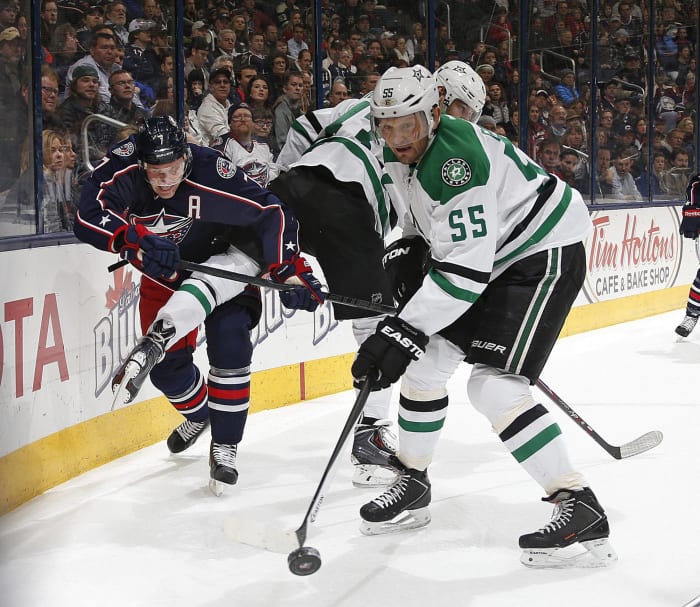
Chris Russell/Columbus Dispatch/MCT/Sipa USA
Gonchar has a borderline Hall of Fame case. He twice scored over 20 goals in a season as a defenseman, and he’s in the top 100 in career assists. The Russian started his final season with the Stars but was swiftly sent to the Canadiens where he picked up 13 points. Gonchar also notably played for two heated rivals: the Capitals and the Penguins.

Nhat V. Meyer/San Jose Mercury News/MCT/Sipa USA
Blake doesn’t need a Hall case made for him. He’s already in, and he’s now a front office guy in the NHL so he’s still around the game. The big defenseman with the big shot won one Norris and honestly probably could have stuck around for another season if he chose to. In his final campaign — he was a Shark at the time — he played over 20 minutes a night and had 30 points. Granted, he was 39 when the season started, but it ended with him playing 49 games as a 40-year-old.
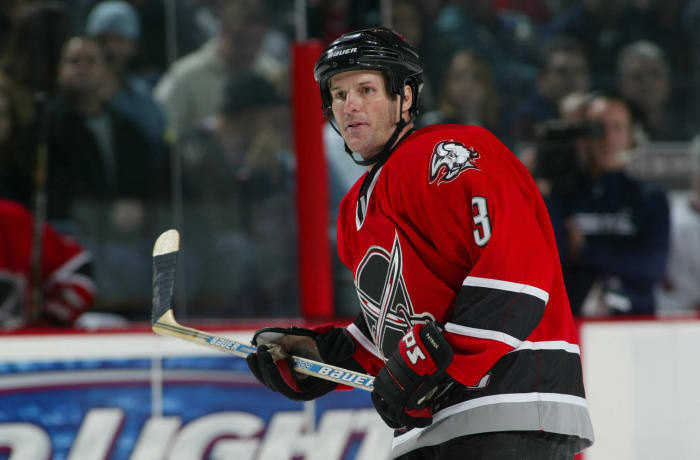
Rick Stewart/Getty Images
If you are a hockey fan of a more recent vintage, you may be scratching your head at this name. However, if you were watching hockey in the ‘80s and early ‘90s, especially if you were a Rangers fan, you remember Patrick. He spent his first 10 seasons with New York, notching 467 points in 6,712 games. The defenseman spent the end of his career in Buffalo as a reliable, if unremarkable, blue liner.
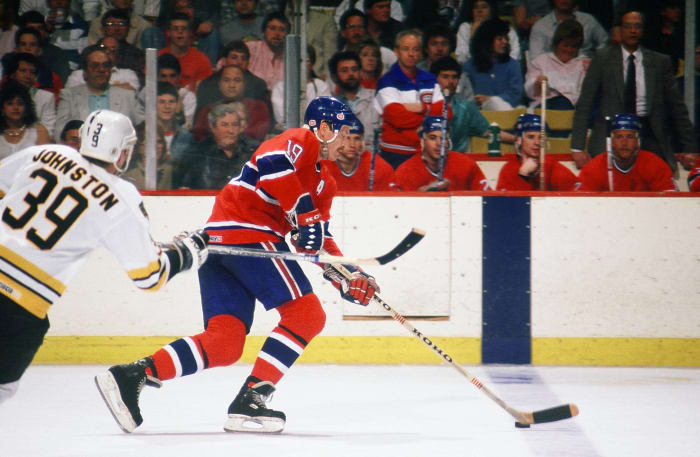
Steve Babineau/NHLI via Getty Images
From here on out, it should be all names you recognize and remember. That includes “Big Bird” himself, a Hall of Famer and Habs legend. After 17 seasons, and six Cups, with Montreal, he ended his career with the Kings. He had two good seasons there, but he clearly had lost a step after turning 40. He played in 56 games in his final season and had only 13 points.

Julian H. Gonzalez/Detroit Free Press/MCT/Sipa USA
No, Numminen wasn’t a big star, but he made three All-Star Games. He was a staple in the NHL from the late ‘80s until the end of the 2000s. The Finn had five seasons where he scored double-digit goals, impressive for a defenseman. Injuries limited him to one game in his penultimate campaign, so he returned as a 40-year-old to play in 57 games for the Sabres.

Dave Sandford/Getty Images
Mercifully, the Captain Steve Y never left the Red Wings. He played there for 22 seasons and helped to end their Cup drought. Yzerman started his career as a points machine but eventually changed his game so that he ended up winning a Selke. The current GM of the Wings returned after the lockout to spend 61 more games wearing the “C” for Detroit and picking up 34 points.

Stan Szeto/USA TODAY Sports
An icon of the Sharks franchise, Marleau was with San Jose for over a decade before moving on to the Maple Leafs to try and finally win a Cup. It didn’t happen, so he returned to the Sharks, only to then get dealt to the Penguins to try and win a Cup. Again it didn’t happen. Marleau then played one more season with the Sharks before retiring. It has already been announced his number will be the first retired in San Jose history.

Scott Cunningham/Getty Images
Mellanby was arguably the face of the Panthers team that went to the Stanley Cup Finals. He also infamously killed a rat in the locker room, which led Florida fans to pelt the ice with rats during that run. Mellanby was more than an amateur exterminator though. He had 840 points in his career, including 36 as a Thrasher in his final season.

Mark J. Rebilas/USA TODAY Sports
It’s always nice when a guy can spend his entire, lengthy career with one team. Doan’s first season was with the Winnipeg Jets, and then he joined them as they moved to Phoenix. He was with the team when it transitioned from the Phoenix Coyotes to the Arizona Coyotes. Doan was the captain when he was a 40-year-old, playing in 74 games. He wasn’t contributing much on the score sheet, but his presence was welcome.
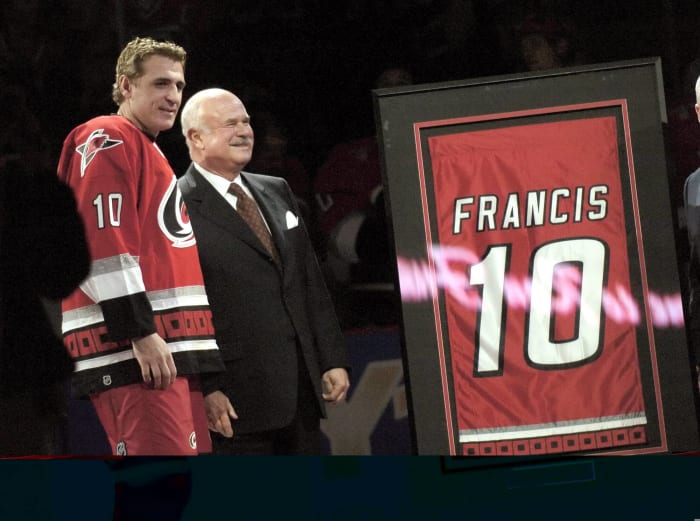
Grant Halverson/Getty Images
We have a pretty big jump here, as Francis played 98 games after turning 40. Francis, likely considered the best player in Hartford Whalers history, spent many years with the Penguins as well before returning to the Whalers franchise, now known as the Carolina Hurricanes. That being said, he ended his career playing 12 games with the Maple Leafs as the Canes moved him to try to get him a Cup. It didn’t work out.
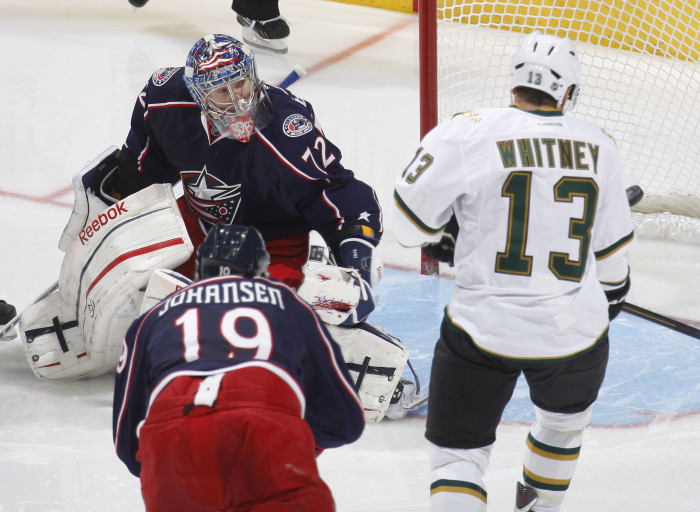
Adam Cairns/Columbus Dispatch/MCT/Sipa USA
Here’s the first guy to hit the triple-digit mark after 40. Whitney was good late into his career and actually made the All-NHL Second Team as a 39-year-old after he had 77 points for the Coyotes. He then moved to the Stars for two seasons in his 40s. Whitney added 60 points to his career total, but he had gotten over 1,000 in that 77-point campaign in Arizona so it wasn’t like he was just holding on for that milestone.

Mitchell Layton/MCT/Sipa USA
Alfredsson won a Calder in his first season with the Senators and then played his final season with Ottawa at 40. However, that wasn’t the end of his career. After spending 17 seasons with the Senators, Alfredsson moved to the Red Wings for one more year. It wasn’t a bad year either, as he scored 18 goals and added 31 assists in his one year not wearing an Ottawa jersey.
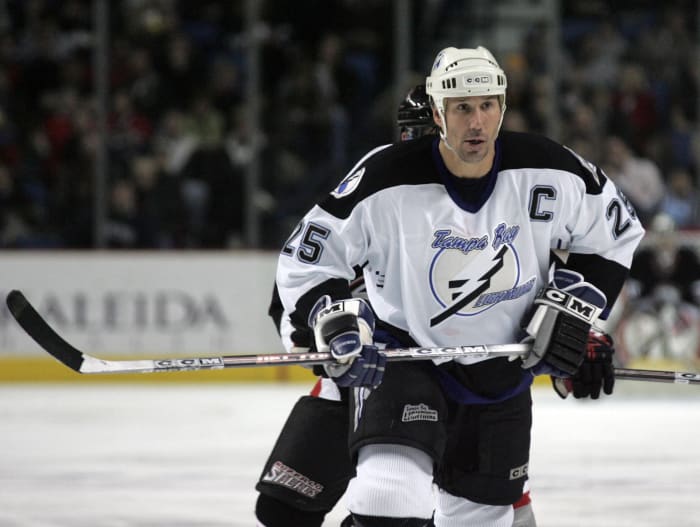
Jerome Davis/NHLImages
Andreychuk is one of the most underrated players in NHL history. The man had 640 career goals! He also had an age-40 season to remember. Playing for the Lightning, he scored 21 goals during the regular season and then added 14 points in the playoffs in leading the team to its first Stanley Cup. He didn’t hang it up there, though. Andreychuk returned after the lockout as a 42-year-old to try and help the Lightning repeat. It didn’t work, but he lasted 42 more games in the NHL.

Elsa/Getty Images
Oates is one of the best playmakers of his era. He led the NHL in assists three times and finished with over 1,000 helpers in his career. In fact, he’s currently eighth in career assists. Oates played effectively two full seasons in his 40s. The first year went well, as he had 45 points with the Mighty Ducks. Then he tried to hang on for one more year, playing 60 games with the Oilers. That did not go as well, as he had only 18 points.
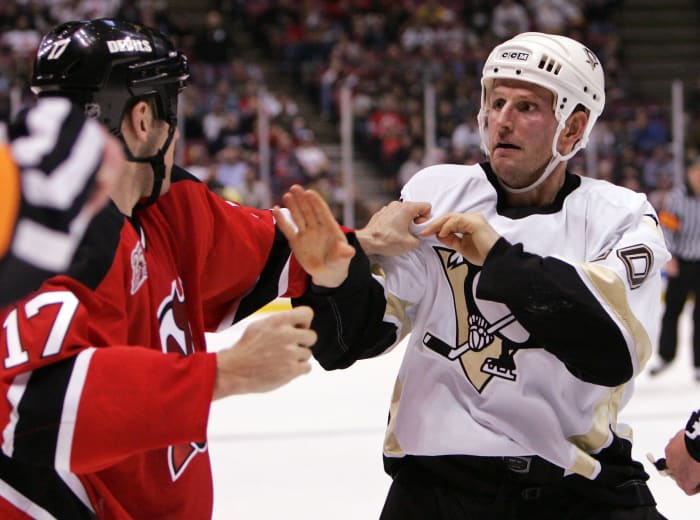
Richard Schultz/WireImage
Roberts racked up goals, and penalty minutes, for a decade with the Flames before becoming a bit of a journeyman. He was also well known for his workout regimen, which is how he played in three seasons after turning 40. They weren’t all full seasons, of course. In fact, in his last season he laced up his skates for 30 games with the Lightning as a 42-year-old.

Neville E. Guard-USA TODAY Sports
Thornton hasn’t officially retired, but he’s not currently playing in the NHL. After years with the Sharks, Thornton spent one season with the Maple Leafs and then one with the Panthers. By this point, though, he was mostly a fourth-line player hanging on and adding games to his total. Now 43, it seems like Thornton’s time in the NHL is either over, or will be soon.
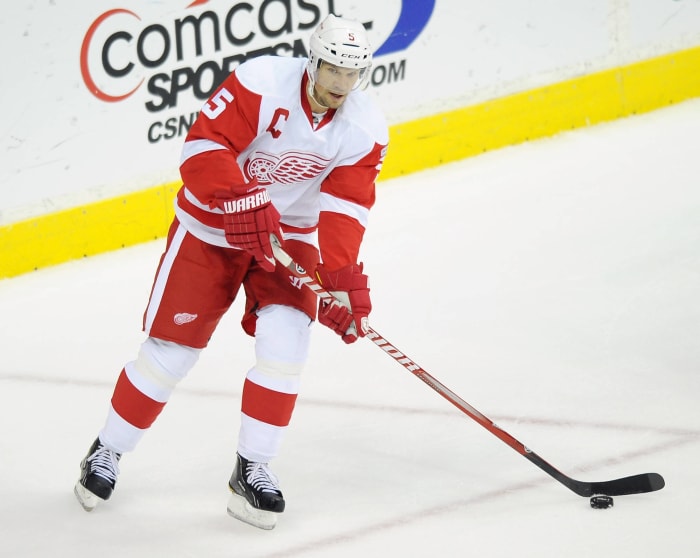
Chuck Myers/MCT/Sipa USA
Lidstrom probably could have kept playing. As a 40-year-old he played a full 82 games and won the Norris. In his final season he finished fifth in the Norris voting. He was playing almost 24 minutes a night as a 41-year-old! However, the best defenseman of his era was never a glory seeker, so he decided to retire and head home to Sweden for a quiet life.
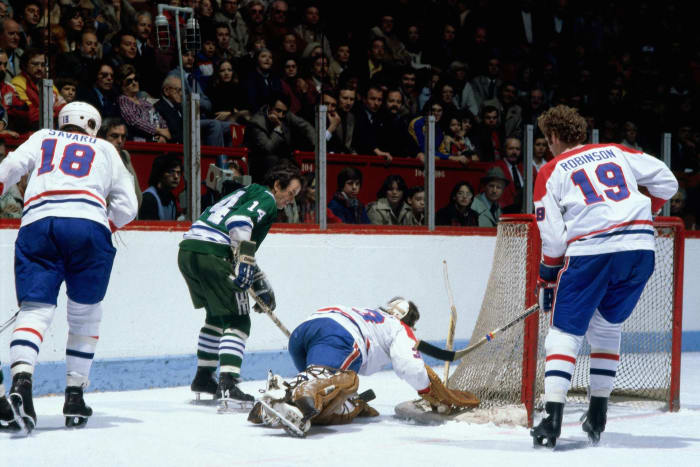
Denis Brodeur/NHLI via Getty Images
You may have noticed a lot of these names are modern. Most of them retired in the 2000s if not later, as playing into your 40s is a pretty modern phenomenon. Keon is a different story. His first NHL season was 1960-61 when he won the Calder. Keon retired in 1982. A true Toronto legend who won the Conn Smythe the last time the Leafs won a Cup, he was an iron man as a 40-year-old. He played two seasons after turning 40, both with Hartford. In one season he played 80 games, and in his final season he played “only” 78.

Raj Mehta/USA TODAY Sports
There is a huge jump from Keon to Cullen, who just retired in 2019. Keon played 166 games after turning 40. Cullen played 213. He was never great, but he routinely racked up 30 to 50 points a season. Cullen played in three seasons after turning 40, and he played over 70 games in each campaign.

Dave Sandford/Getty Images
Messier could have retired a decade earlier and still been a Hall of Famer. The day he lifted the Stanley Cup for the Rangers, he was golden. Instead he kept playing, and he didn’t do himself injustice. Sure, the years in Vancouver were forgettable, but then he returned to the Rangers for four more seasons. When he was 40 he had 67 points. In his age-42 and age-43 seasons, he had at least 40 points. Seriously, as a 43-year-old man, Moose played 76 games and had 43 points. What a legend.
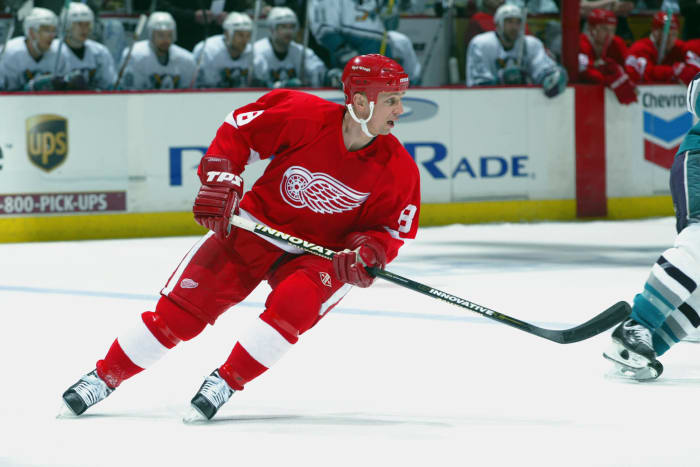
Donald Miralle/Getty Images/NHLI
A product of the Red Army system of the Soviet Union, Larionov wasn’t able to make his NHL debut until he was almost 30. However, the man known as “The Professor” used his hockey brain to stick around to play in almost 1,000 career regular-season games. That includes 243 after he turned 40. As a 41-year-old he had 43 points in helping the Red Wings to a Stanley Cup. His last year in New Jersey was a sour note to end his career on, but that’s a minor blemish.

Nuccio DiNuzzo/Chicago Tribune/MCT/Sipa USA
Selanne burst onto the scene as a rookie, scoring 76 goals for the Jets. That’s still a record. It’s one of three seasons in which the Finnish Flash led the NHL in goals. Selanne spent most of his career in Anaheim, including four seasons after turning 40. So what’s more impressive? The fact he scored 31 goals in his age-40 season? Or the fact he managed 27 points in 64 games in his final campaign when he was 43?

Ric Ernst/PNG/Postmedia News/MCT/Sipa USA
Call Recchi a compiler if you will. You can say, “Sure he finished with 1,533 career points, but he played 22 seasons!” We say it’s incredible that he played 22 seasons. He was an ironman to the end, by the way. Recchi played at least 80 games in each of his final three seasons, all when he was over 40 and with the Bruins. He also won a Cup in his final season, playing 25 games and notching 14 points — after he had turned 43, mind you.
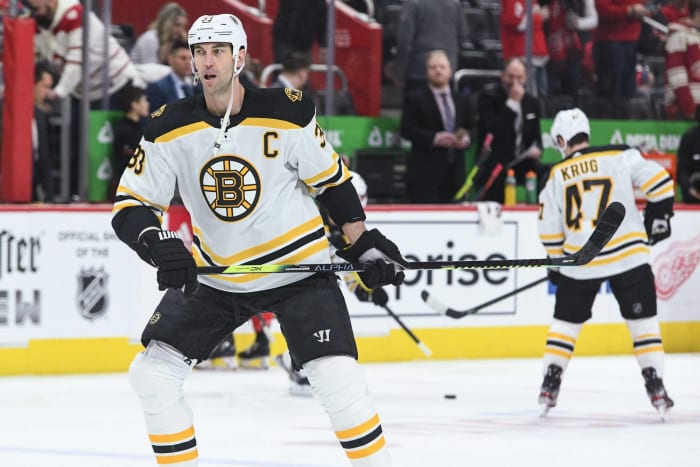
Tim Fuller/USA TODAY Sports
Chara is incredible in multiple ways. He’s played more games after turning 40 than any defenseman. He’s also 6-foot-9. After years as the captain of the Bruins, Chara spent one season with the Capitals, and then one with the Islanders. As a 44-year-old, he played 72 games in New York. The future Hall of Famer played a whopping 405 games in his forties.

Stan Szeto/USA TODAY Sports
These two guys, starting with Jagr, will never be caught. Recchi played in 271 games after turning 40. Jagr played in 412. Nobody was going to stop him. The greatest Czech player in history finished his NHL career with 766 goals even though he spent a few seasons in the KHL in the middle of his career. If not for that, he may have topped Gretzky’s goal-scoring record. He also played 82 games as a 44-year-old and scored 16 goals.
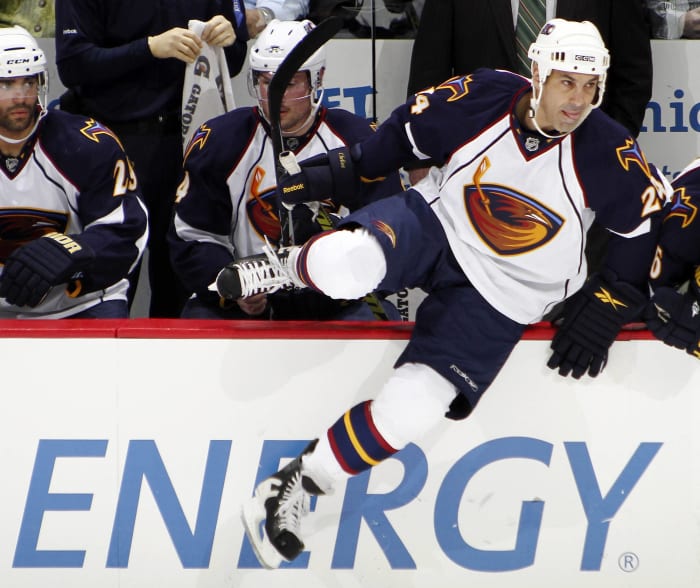
Neal C. Lauron/Columbus Dispatch/MCT/Sipa USA
Here is how much Chelios loved playing hockey. Not only did he play 420 games after turning 40 and not only did he play 26 seasons in the NHL, but he also played 69 games as a 46-year-old and 28 games as a 47-year-old. Chelios wanted to keep playing hockey so badly that he suited up for Chicago when he was 48. Oh, that’s the Chicago Wolves, by the way, an AHL team. The defenseman was willing to play in the minors to stay on the ice, and eventually he was called up by the Atlanta Thrashers to play in seven games…when he was 48. Nobody is ever going to dedicate his life to hockey like Chelios did.
